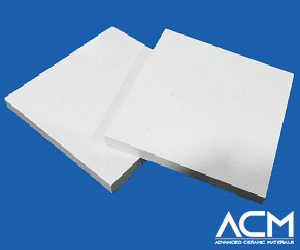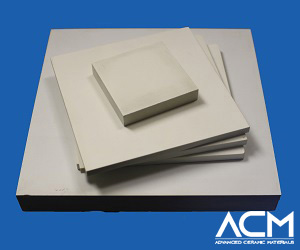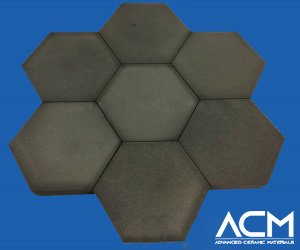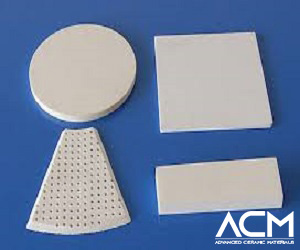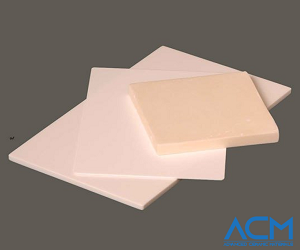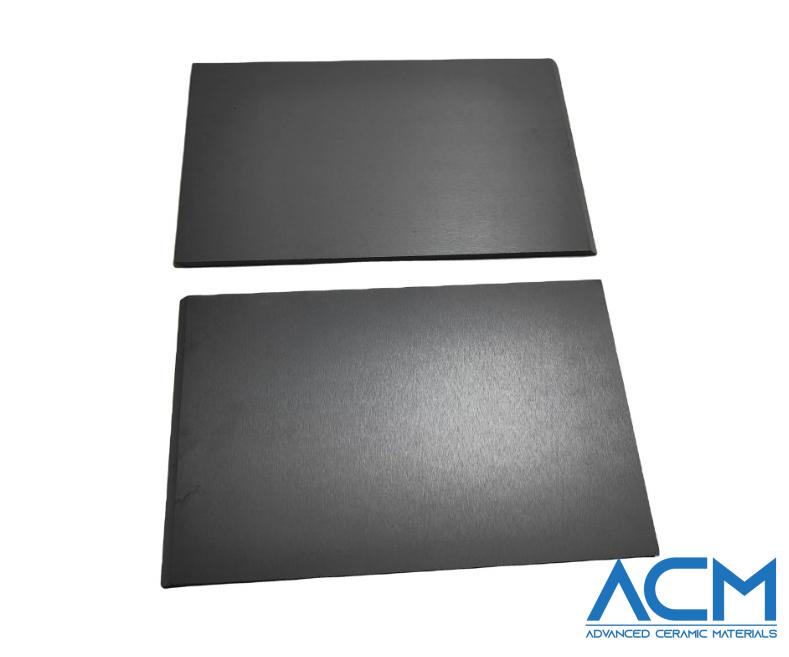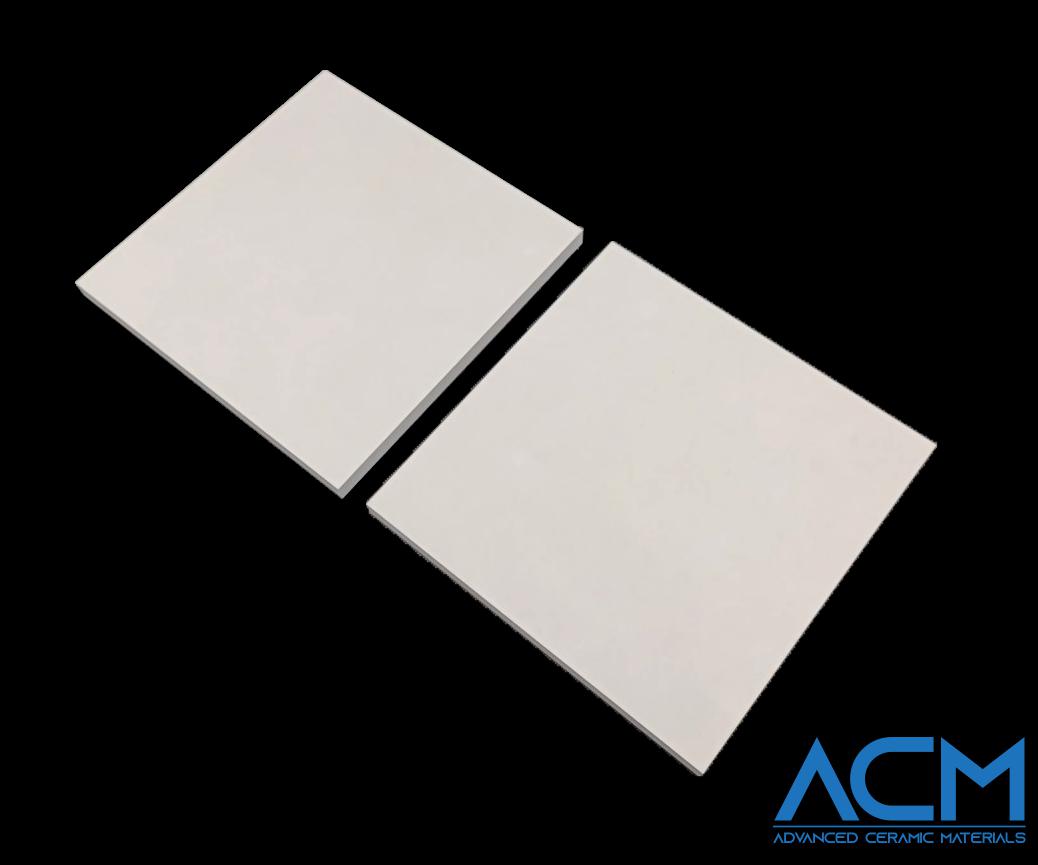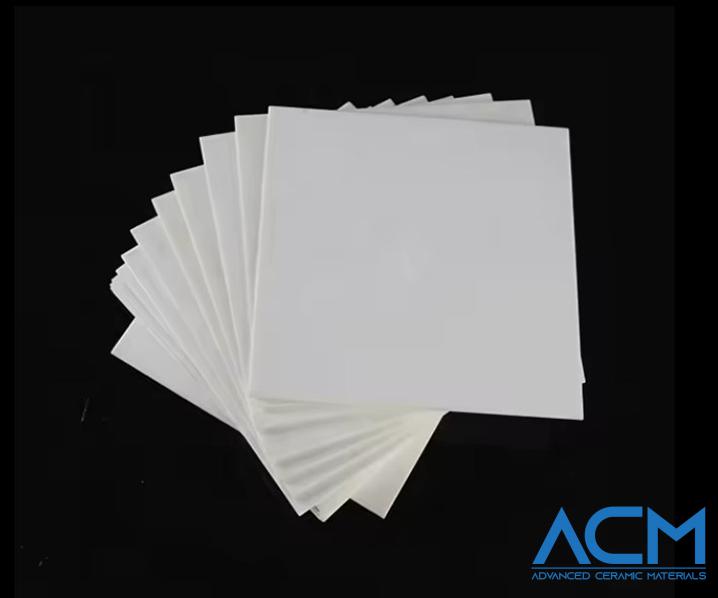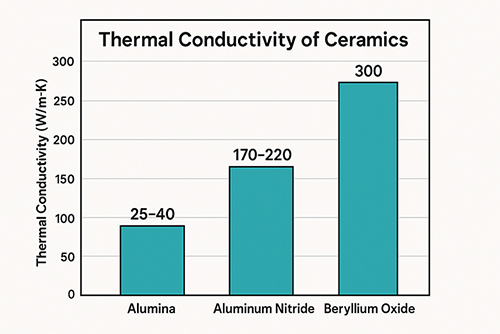Top 10 Ceramic Plate Materials: The Essential Selection Guide
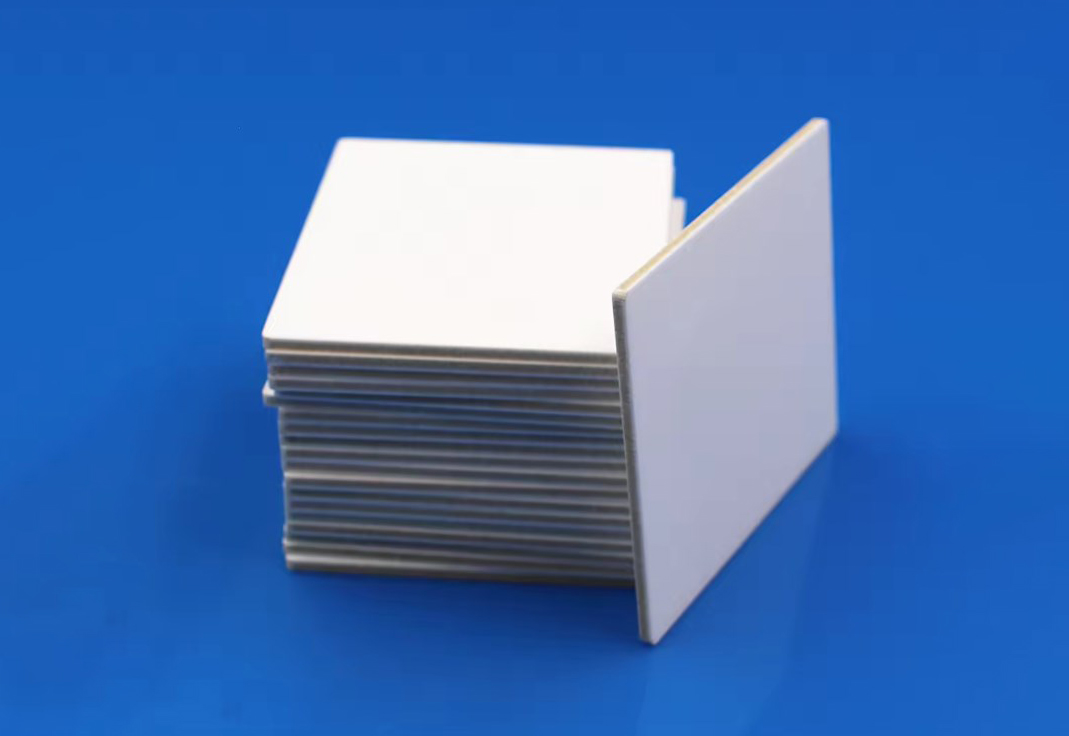
Introduction
In the realm of advanced materials, ceramic plates stand out for their exceptional properties and versatility, catering to a wide array of industrial, technological, and scientific applications. From the high-temperature resilience required in aerospace components to the precision and durability demanded in electronic devices, ceramics offer unparalleled benefits. This guide delves into ceramic plate materials, focusing on the top 10 types that have become essential in pushing the boundaries of what's achievable in engineering and manufacturing.
Each material brings its unique set of properties to the table. These range from extreme hardness and thermal conductivity to electrical insulation and thermal shock resistance, making them invaluable in specific contexts and applications.
QUICK GUIDE:
- Silicon Carbide (SiC) Plate
- Alumina (Al₂O₃) Plate
- Boron Nitride (BN) Plate
- Silicon Nitride (Si₃N₄) Plate
- Boron Carbide (B₄C) Plate
- Aluminum Nitride (AlN) Plate
- Zirconia (ZrO₂) Plate
- Mullite (3Al₂O₃·2SiO₂) Plate
- Cordierite (2MgO·2Al₂O₃·5SiO₂) Plate
- Steatite (Magnesium Silicate) Plate
As industries continue to evolve and demand more from the materials they rely on, understanding the nuances of each ceramic type becomes critical. This guide aims to illuminate the key characteristics, applications, and advantages of these top 10 ceramic plate materials. Whether you're an engineer seeking the ideal material for a high-stress application, a designer looking for the perfect balance between form and function, or a manufacturer aiming to enhance product durability, this essential selection guide is crafted to assist you in making informed decisions. By exploring the capabilities and limitations of each material, we hope to provide a comprehensive resource that helps navigate the vast landscape of ceramic materials, ensuring the selection aligns perfectly with your project's requirements.
1. Silicon Carbide (SiC) Plates
Silicon Carbide (SiC) is a highly valued material in the ceramic industry, noted for its exceptional thermal conductivity, wear resistance, and capability to withstand harsh environments. These key attributes render SiC plates indispensable for applications demanding extreme durability and thermal management, ranging from protective armor to high-temperature furnace components.
Thermal Conductivity: SiC's remarkable thermal conductivity is pivotal in applications requiring efficient heat dissipation, such as electronic devices and heat exchangers. This property significantly enhances the performance and lifespan of components by managing thermal stress effectively.
Wear Resistance: The extraordinary wear resistance of Silicon Carbide ensures the longevity and reliability of various mechanical systems. Utilized in the manufacturing of mechanical seals, bearings, and even as armor plating, SiC plates provide unmatched durability against physical abrasion and degradation.
High-Temperature Stability: SiC maintains its structural integrity and functionality at temperatures exceeding 1,500°C, making it an ideal choice for high-temperature applications. This thermal stability is crucial in sectors like aerospace and automotive, where materials must endure extreme operating conditions.
Harsh Environment Suitability: The robust nature of Silicon Carbide allows it to resist corrosion and oxidation, making it suitable for use in chemically aggressive and high-temperature environments. Applications include chemical processing equipment, gas turbine components, and nuclear reactor parts, where material resilience is paramount.
Silicon Carbide plates offer a comprehensive solution to the challenges of high temperatures, mechanical wear, and environmental degradation. By leveraging SiC's superior properties, industries achieve advancements in durability, efficiency, and performance, underscoring the material's critical role in modern technological applications.
2. Alumina (Al₂O₃) Plates
Alumina, or aluminum oxide (Al₂O₃), is renowned for its excellent electrical insulation properties and robustness, making alumina plates a cornerstone material in the ceramics industry. Its significant hardness, coupled with good thermal conductivity, positions alumina plates as a versatile solution for a wide array of applications, spanning from electronic substrates to biomedical devices and wear-resistant components.
Electrical Insulation: Al₂O₃'s outstanding electrical insulation capabilities are essential in electronic applications, where it serves as a substrate and insulating layer in integrated circuits and PCBs. This property ensures the reliable performance of electronic devices by preventing electrical leakage and enabling miniaturization.
Thermal Conductivity and Stability: Despite being an excellent electrical insulator, alumina simultaneously offers good thermal conductivity. This dual capability allows it to effectively dissipate heat in electronic components, thereby enhancing their longevity and reliability. Furthermore, alumina's stability at high temperatures makes it suitable for applications requiring thermal resistance, such as furnace linings and thermal barriers.
Biocompatibility: In the biomedical field, alumina's biocompatibility makes it an ideal material for prosthetic devices and implants. Its smooth surface and resistance to wear contribute to the longevity and functionality of biomedical implants, reducing the risk of rejection and infection.
Wear Resistance: The hardness of alumina contributes to its wear resistance, making it a preferred material for protective coatings and components subjected to abrasive environments. This property is exploited in applications ranging from cutting tools to components in pumps and valves, where durability is critical.
Alumina plates exemplify the versatility of ceramic materials, combining electrical insulation with thermal conductivity and biocompatibility. This unique blend of properties ensures alumina's continued relevance across electronics, industrial, and biomedical applications, solidifying its position as a staple in advanced material solutions.
3. Boron Nitride (BN) Plates
Boron Nitride (BN) plates are distinguished by their exceptional thermal stability, lubricity, and electrical insulation, making them uniquely suited for high-temperature electrical insulators and advanced thermal management solutions. Their intrinsic properties offer significant advantages across a variety of demanding applications.
Thermal Stability and Lubricity: BN stands out for its remarkable thermal stability, maintaining its integrity and performance at temperatures up to 1000°C in air and over 2000°C in inert atmospheres. This thermal resilience, combined with its lubricious surface, minimizes wear and tear on components, especially beneficial in high-temperature applications where conventional materials might fail.
Electrical Insulation: In addition to its thermal properties, BN is an excellent electrical insulator. This characteristic is crucial in electronic components where electrical isolation is necessary to prevent short circuits and ensure the safe operation of devices, especially under high-temperature conditions.
Chemical Inertness: BN's resistance to chemical attack is another key feature. It does not react with most molten metals, acids, and alkalis, making it suitable for crucibles and containers used in high-temperature chemical processes. This chemical inertness ensures that BN plates can be used in environments where other materials might degrade.
Applications: The combination of thermal stability, electrical insulation, and chemical inertness makes BN plates ideal for a wide range of applications. They are used in high-temperature electrical insulators, components for semiconductor manufacturing equipment, and substrates for thermal management solutions in electronics. BN's unique properties also make it suitable for use in aerospace components, where material performance at extreme temperatures is critical.
Boron Nitride plates embody the cutting-edge of material science, offering solutions to some of the most challenging problems in high-temperature operations and electronic device manufacturing. Their adoption across various industries underscores the ongoing search for materials that can withstand extreme conditions while maintaining high performance and reliability.
4. Silicon Nitride (Si₃N₄) Plates
Silicon Nitride (Si₃N₄) plates are celebrated for their exceptional mechanical strength, thermal shock resistance, and low thermal expansion coefficient. These characteristics render Si₃N₄ an indispensable material in applications demanding resilience under mechanical and thermal stress. Silicon Nitride's unique composition offers advantages unmatched by many other ceramics, making it an ideal choice for a wide range of high-performance applications.
Mechanical Strength and Toughness: Si₃N₄ stands out for its remarkable fracture toughness and mechanical strength, significantly higher than many other ceramics. This toughness makes Si₃N₄ plates resistant to impact and bending stresses, ideal for components subjected to high mechanical loads.
Thermal Shock Resistance: One of Si₃N₄'s most notable properties is its exceptional resistance to thermal shock. This enables Si₃N₄ components to withstand rapid temperature changes without cracking or degrading, a critical requirement in high-temperature engineering applications.
Low Thermal Expansion: The low thermal expansion coefficient of Si₃N₄ closely matches that of certain metals, facilitating its use in metal-ceramic assemblies. This property minimizes stress at the interface of materials with different expansion rates, enhancing the longevity and reliability of composite components.
Applications: Silicon Nitride plates are extensively utilized in demanding environments, such as in automotive and aerospace engine components, where their resistance to high temperatures and mechanical stress prolongs service life and enhances performance. Additionally, Si₃N₄ is used in bearings, metal forming tools, and wear parts, benefiting from its excellent wear resistance and mechanical properties. Its thermal and electrical properties in the electronics sector make it suitable for circuit board substrates and thermal insulators.
The resilience, thermal stability, and versatility of Silicon Nitride plates underscore their critical role in pushing the boundaries of engineering and technology. Their ability to perform under extreme conditions ensures Si₃N₄'s continued importance in the development of innovative solutions across multiple industries.
5. Boron Carbide (B₄C) Plates
Boron Carbide (B₄C) plates are esteemed for their incredible hardness and lightweight properties, making them an essential material for defensive armor and abrasive applications. As one of the hardest materials known, ranking only below diamond and cubic boron nitride, B₄C offers exceptional resistance to wear and abrasion, along with a low density that makes it ideal for applications where weight savings are critical.
Extreme Hardness and Wear Resistance: The exceptional hardness of boron carbide is its defining characteristic, allowing it to serve as an effective material in body armor, vehicle armor, and various ballistic protection applications. This extreme hardness also makes B₄C plates suitable for abrasive environments where material durability is paramount.
Lightweight: Despite its hardness, boron carbide has a relatively low density, making it significantly lighter than other armor materials such as steel. This property is crucial in applications where weight reduction contributes to enhanced mobility and performance, particularly in personal body armor and aerospace protective systems.
Neutron Absorber: Beyond its mechanical properties, B₄C is also valued for its capacity to absorb neutrons, making it an important material in nuclear reactors. Its use as a neutron-absorbing material in control rods and shielding components helps in managing nuclear reactions and ensuring the safety of nuclear facilities.
Applications: The combination of hardness, wear resistance, and lightweight properties positions boron carbide plates as a preferred choice in defense for personal and vehicle protection. Additionally, its application in the nuclear industry as a neutron absorber underscores its versatility and the critical role it plays in ensuring safety and efficiency. In industrial settings, B₄C is utilized in abrasive tools and components that require superior wear resistance under harsh operating conditions.
Boron Carbide plates exemplify the advanced material solutions that cater to specific and demanding applications, from personal and vehicle protection to nuclear safety and industrial abrasives. Their unique combination of properties ensures that B₄C remains a material of choice for applications requiring the utmost in hardness, wear resistance, and lightweight performance.
6. Aluminum Nitride (AlN) Plates
Aluminum Nitride (AlN) plates stand out for their exceptional thermal conductivity combined with excellent electrical insulation properties, making them uniquely suited for electronic applications where heat dissipation is critical. This material offers a rare combination of properties that bridge the gap between metallic and ceramic materials, providing solutions for challenging thermal management issues in advanced electronics and optoelectronics.
Thermal Conductivity and Electrical Insulation: AlN's most notable property is its high thermal conductivity, which is close to that of some metals, enabling efficient heat dissipation. Unlike metals, however, AlN is an excellent electrical insulator. This combination allows AlN plates to manage heat in electronic devices without risking electrical shorts or interference, a crucial advantage in densely packed circuits and high-power electronics.
Matching Thermal Expansion to Silicon: Another significant advantage of AlN is its thermal expansion coefficient, which closely matches that of silicon. This compatibility minimizes stress and potential damage during thermal cycling, making AlN plates an ideal substrate for silicon-based semiconductors and integrated circuits. This property is particularly beneficial in high-performance applications where device longevity and reliability are paramount.
Chemical Stability and Mechanical Strength: AlN plates exhibit good chemical stability and are resistant to corrosion by most molten metals and harsh environments, further expanding their application scope. Additionally, the material possesses good mechanical strength, contributing to the durability of components made from AlN.
Applications: Leveraging its thermal, electrical, and mechanical properties, AlN plates are extensively used in electronic packaging and heat-sink applications. They are also employed in optoelectronic devices, including light-emitting diodes (LEDs) and laser diodes, where efficient heat management is critical to performance. Moreover, AlN's compatibility with silicon makes it an excellent choice for substrates and insulators in microelectronic devices.
Aluminum Nitride plates offer an optimal solution for advanced applications requiring efficient heat dissipation alongside electrical insulation. Their use in the electronics industry underscores the importance of materials science in addressing the thermal management challenges of next-generation technologies.
7. Zirconia (ZrO₂) Plates
Zirconia (Zirconium Dioxide, ZrO₂) plates are renowned for their exceptional fracture toughness and thermal stability, making them one of the most resilient ceramic materials available. This strength, coupled with excellent wear resistance, positions ZrO₂ as a prime candidate for applications requiring durability under stress and varying temperatures.
High Fracture Toughness and Strength: Zirconia's most notable property is its outstanding fracture toughness, which is significantly higher than most other ceramics. This characteristic enables ZrO₂ plates to resist cracking and breakage under conditions that would typically compromise other materials. The strength of ZrO₂ is particularly beneficial in structural applications where mechanical integrity is critical.
Thermal Stability: ZrO₂ maintains its properties over a wide temperature range, exhibiting excellent thermal stability. This makes it suitable for use in high-temperature environments, such as furnace linings and thermal barrier coatings, where it can withstand repeated thermal cycling without degradation.
Wear Resistance: The hardness of zirconia contributes to its excellent wear resistance, allowing it to stand up to abrasive conditions without significant wear. This property is exploited in applications such as cutting tools, pump components, and valves, where longevity and reliability are paramount.
Biocompatibility: Zirconia is biocompatible, making it an ideal material for medical applications, particularly in dental and orthopedic implants. Its smooth surface finish and resistance to wear ensure the longevity of medical devices, while its aesthetic qualities make it a popular choice for dental restorations.
Applications: Beyond its industrial and medical applications, ZrO₂ plates are also used in electronics for their insulating properties and in optical devices where clarity and durability are required. The material's versatility extends to wear-resistant coatings and insulating layers in various high-performance components.
Zirconia plates exemplify the advancements in ceramic technology, offering a combination of mechanical strength, thermal stability, and biocompatibility unmatched by many other materials. Their wide range of applications underscores the critical role of ZrO₂ in modern material science, from enhancing the durability of industrial machinery to improving the quality of medical implants.
8. Mullite (3Al₂O₃·2SiO₂) Plates
Mullite plates, composed of aluminum silicate, are distinguished by their exceptional thermal shock resistance and stability under high-temperature conditions. This ceramic material combines the advantageous properties of both alumina and silica, resulting in a unique balance of mechanical strength and thermal endurance.
Thermal Shock Resistance: Mullite's standout feature is its superb resistance to thermal shock. This property allows it to withstand rapid temperature changes without cracking or degrading, making it ideal for applications such as kiln furniture, gas burner nozzles, and protective sheaths for thermocouple sensors. Its ability to maintain integrity in fluctuating thermal environments is critical in industries requiring frequent heating and cooling cycles.
High-Temperature Stability: In addition to its thermal shock resistance, Mullite exhibits excellent stability at elevated temperatures, retaining its strength and shape up to 1850°C. This high-temperature stability is crucial for components exposed to prolonged heat, such as in furnaces and high-temperature filters.
Chemical Resistance: Mullite is also noted for its resistance to chemical attack, particularly from molten metals and aggressive slag. This chemical inertness extends the material's applicability to environments where corrosion or material degradation is a concern, ensuring longevity and reliability of components.
Applications: The thermal and chemical resilience of Mullite plates make them suitable for a wide range of applications beyond industrial heat treatments. They are used in the construction of glass melting furnaces, petrochemical processing, and even in aerospace components where materials are subjected to harsh conditions.
Mullite plates represent an optimal solution for applications demanding high thermal shock resistance and stability at elevated temperatures. Their versatility and durability in challenging environments underscore the importance of material selection in achieving efficiency and longevity in high-performance applications.
9. Cordierite (2MgO·2Al₂O₃·5SiO₂) Plates
Cordierite plates are celebrated for their low thermal expansion coefficient and excellent thermal shock resistance, making them an ideal material for applications where sudden temperature changes are common. This magnesium aluminum silicate compound provides a unique set of properties that ensure performance stability in challenging environments.
Low Thermal Expansion: The most significant advantage of cordierite is its minimal thermal expansion. This quality significantly reduces the risk of thermal stress and cracking under conditions of rapid heating or cooling, making cordierite plates ideal for use in heat exchanger applications, kiln furniture, and as supports for high-temperature processes.
Thermal Shock Resistance: Complementing its low thermal expansion, cordierite's resistance to thermal shock allows it to withstand sudden temperature fluctuations without damage. This property is particularly valued in the manufacturing of ceramic honeycomb structures used for catalytic converters in automotive exhaust systems, where durability under thermal cycling is crucial.
Electrical Insulation: Besides its thermal properties, cordierite also exhibits good electrical insulation at high temperatures. This characteristic makes it suitable for electronic substrates and insulators in electrical and heating applications where maintaining dielectric properties at elevated temperatures is essential.
Applications: Beyond its use in catalytic converters and kiln furniture, cordierite's thermal and electrical properties make it useful in a variety of other applications. These include microwave oven heat diffusers, gas burner tops, and insulation for high-frequency electronics. Its ability to perform under thermal stress and maintain insulation characteristics under heat makes cordierite a versatile material across numerous industries.
Cordierite plates exemplify the critical role of advanced ceramic materials in addressing the thermal management challenges faced by modern technologies. Their deployment across automotive, electronics, and industrial sectors demonstrates the ongoing need for materials that can sustain performance under the demanding conditions of thermal cycling and high temperatures.
10. Steatite (Magnesium Silicate) Plates
Steatite, a form of magnesium silicate, is characterized by its excellent electrical insulation properties combined with mechanical strength and thermal stability. These plates are a preferred choice in the electrical and electronics industries for applications requiring consistent insulating capabilities, especially under high-temperature conditions.
Electrical Insulation: Steatite's standout attribute is its superior electrical insulation. This material can withstand high voltages without breaking down, making it invaluable in the manufacture of electrical insulators, connectors, and components for heating elements. Its reliability in preventing electrical leakage and arcing is crucial for safety and efficiency in electrical systems.
Mechanical Strength and Thermal Stability: Despite its excellent insulating properties, steatite also maintains good mechanical strength and thermal stability. It can endure considerable mechanical stress and resist thermal shock, attributes that are particularly beneficial in applications involving fluctuating temperatures.
Chemical Inertness: Steatite exhibits a degree of chemical inertness, resisting attacks by most acids, except for strong mineral acids. This resistance ensures that steatite components retain their structural integrity and functional properties even in chemically aggressive environments.
Applications: The combination of electrical insulation, mechanical strength, and thermal stability makes steatite plates well-suited for a wide range of applications. They are commonly used in electrical insulation applications, including socket bases for light bulbs, insulators in heating elements, and various components in electronic devices. Additionally, their ability to resist thermal shock and maintain insulating properties at elevated temperatures makes them ideal for critical components in electrical and heating devices.
Steatite plates embody a balance of properties that cater to the demanding requirements of electrical and electronic applications, where consistent performance and durability are paramount. Their use across various sectors underscores the material's versatility and effectiveness in meeting the challenges of modern technological advancements.
Choosing the Right Ceramic Plate Material
Selecting the appropriate ceramic plate material is pivotal for ensuring the success and longevity of your project. Given the diversity of ceramics discussed—each with its unique set of properties—it's crucial to match the material to your specific application needs, cost constraints, and manufacturability considerations.
Application Needs: Start by assessing the operational environment and performance requirements of your application. For high-temperature applications, materials like silicon carbide or mullite might be suitable due to their thermal stability. For electrical insulation, alumina or steatite could be more appropriate. Consider the material's mechanical strength, thermal conductivity, wear resistance, and chemical stability about the stresses it will encounter.
Cost and Manufacturability: Balancing performance with cost is essential. While some materials may offer the best properties, their high cost or complex manufacturing requirements could make them less feasible. Materials like alumina provide a good balance of performance and cost for a wide range of applications, making them a popular choice.
Expert Consultation: Consulting with ACM's material scientists or ceramic engineering experts is invaluable, especially for specialized or critical applications. These professionals can provide insights into the latest material developments, help anticipate potential challenges, and recommend materials based on cutting-edge research and industry best practices.
Conclusion
This guide has traversed the landscape of popular ceramic plate materials, highlighting the importance of selecting the right material to meet the specific requirements of diverse applications. From the wear-resistant silicon carbide to the electrically insulating steatite, understanding each material's unique properties is key to harnessing the full potential of ceramics in advancing technology and industrial applications.
As the field of materials science continues to evolve, staying engaged with the latest developments and consulting with experts will be crucial for making informed material selections. Partnering with a reputable supplier like Advanced Ceramic Materials can provide access to a wide range of high-quality ceramic plates, along with expert advice to guide your selection process. Whether you're designing a new electronic device or seeking materials for high-temperature industrial processes, the right ceramic plate material, supported by the knowledge and resources of Advanced Ceramic Materials, can significantly enhance performance, durability, and efficiency.
{{item.content}}
LEVE A REPLY
{{item.children[0].content}}
{{item.content}}
LEAVE A REPLY
SUBSCRIBE OUR NEWSLETTER
- Boron Nitride in Cosmetics: Enhancing Performance and Sensory Appeal
- Maximize MOCVD Yield and Purity with Hexagonal Boron Nitride Setters
- What Are the Advantages and Uses of Boron Nitride Ceramic Sheet?
- The Compression Annealing Advantage for Pyrolytic Boron Nitride
- Beyond Insulation: The Surprising Spectrum of Ceramic Thermal Conductivity









